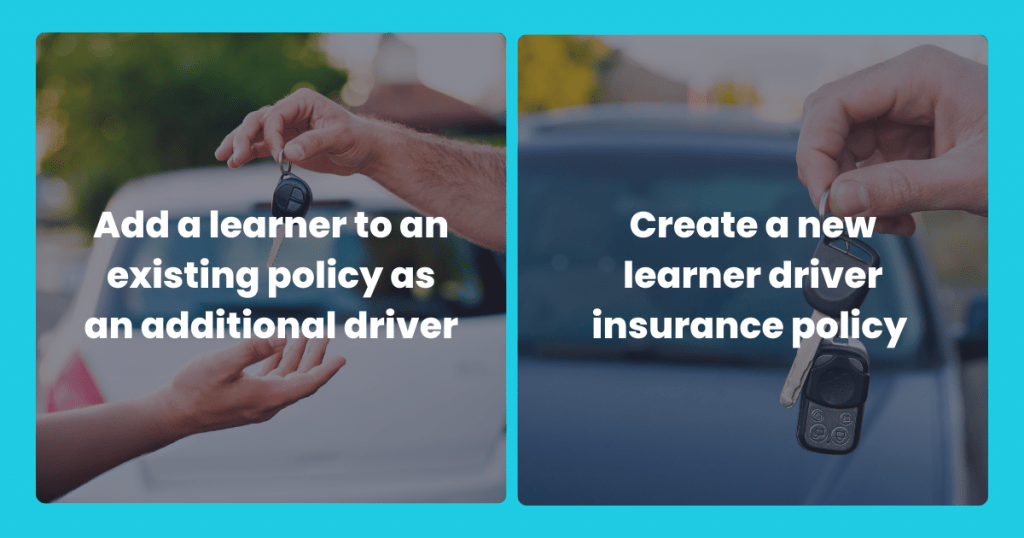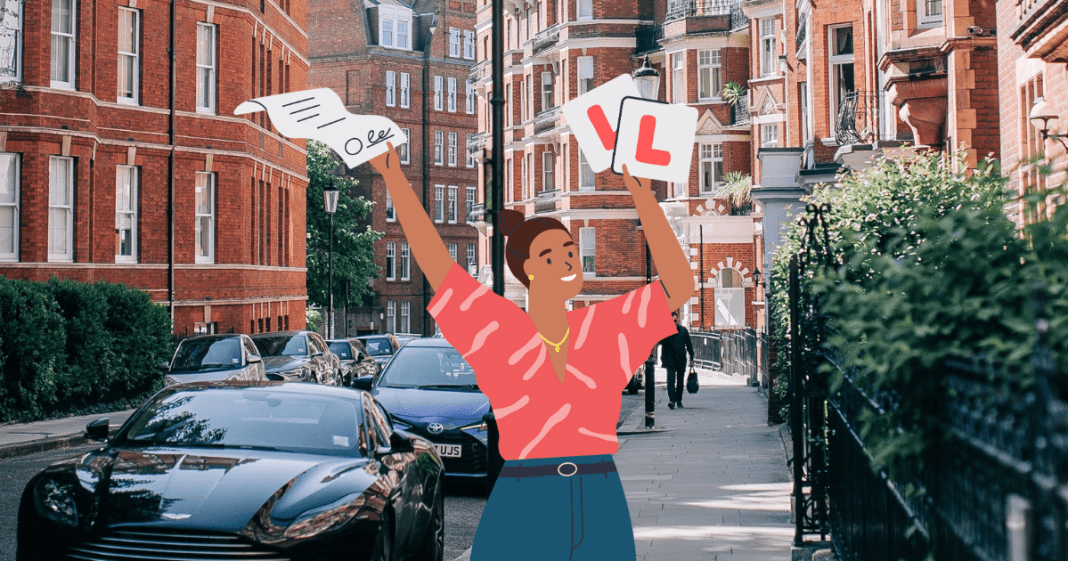Last Updated on November 20, 2024
Learning to drive is a significant milestone in a person’s life, filled with excitement, freedom, and a few nerves. For parents, guardians, and others responsible for learner drivers, it can be equally thrilling but also somewhat daunting. Ensuring that your learner driver is properly insured is a key responsibility, providing both legal protection and peace of mind as they take to the roads for practice. The process of insuring a learner driver can seem complex, but it doesn’t have to be.
Whether they’re practising in a parent or guardian’s car, a sibling’s car, or their own, having the right learner driver insurance in place is crucial. This insurance allows learners to build their driving skills while being fully protected should anything go wrong. This guide is designed to help you navigate the process of how to insure a learner driver, whether you’re helping a learner practise in your car, or they need cover for their own vehicle, knowing your options and understanding the steps involved will help you make the best decision.
What Is Learner Driver Insurance?
Learner driver insurance is a specialised type of insurance policy designed for those who are learning to drive and haven’t yet passed their driving test. Unlike standard car insurance, learner driver insurance is structured to provide comprehensive cover while a learner practises driving under the supervision of someone aged 21 or over, having held a full driving license of three years. Learner insurance is crucial because it ensures that the learner is covered in case of an accident while they are practising outside of official driving lessons with an instructor. Driving without insurance in the UK is illegal, so ensuring the learner has the right coverage is vital for their safety and to comply with the law.
At Collingwood Insurance, we offer flexible options for learner drivers, including short-term and annual policies. This allows learners to practise as frequently as they need, without the cost of a long-term commitment, unless it’s necessary.

Why Is Learner Driver Insurance Important?
Along with being a legal requirement to practice driving in a car that is not a driving instructors, learner driver insurance can also provide the following benefits:
- Protection in the event of an accident: Driving can be unpredictable, and accidents can happen, even to experienced drivers. Learner drivers, being new to the road, can be prone to making more mistakes. Having learner driver insurance ensures that both the driver and the car are protected in the event of a collision, helping to cover repair costs or other liabilities.
- Encourages safe driving habits: Knowing that they are covered under an insurance policy encourages learner drivers to be responsible behind the wheel. It reinforces the idea that driving is a serious activity that requires caution and attention to the rules of the road.
- Legal peace of mind: Without proper insurance, a learner driver and their supervisor could face legal repercussions, including fines and penalties. A learner driver insurance policy helps avoid these risks, making it easier for the learner to focus on practising their driving skills safely.
Whether a learner is practising in their own car or in a vehicle belonging to someone else, ensuring they have learner driver insurance in place is a critical step toward ensuring their safety on the road.
The Different Ways You Can Insure a Learner Driver
When it comes to insuring a learner driver, there are two main options. You can either add them to an existing insurance policy or take out a new learner driver insurance policy, each with its own advantages and disadvantages. Choosing the right option depends on the learner’s specific circumstances, including how often they’ll need to practise and whose car they’ll be driving.

Add a Learner to an Existing Policy
Adding the learner driver to an existing car insurance policy is a straightforward and common way to ensure they’re covered when practising driving. This option is typically used when a learner driver will be using a family member’s car. By adding the learner to an existing policy, you ensure they are legally covered to practise driving in that car.
Benefits of Adding to an Existing Policy:
- Convenience: Since the main policy is already in place, adding a learner driver is generally a quick and easy process.
- Potential cost savings: If the learner only needs short-term coverage, this can be a more affordable option.
- Simplified management: Having everything on one policy makes it easier to keep track of payments, renewals, and policy changes.
Negatives of Adding to an Existing Policy:
- Impact on premiums: Adding a learner driver can raise the cost of your premiums, especially if they have an accident.
- Affects no-claims bonus: Any accident caused by the learner could impact your no-claims discount.
- Coverage limitations: The policy is designed primarily for the main driver, meaning the learner may not have access to all the features of a specialised learner driver policy.
Create Their Own Insurance Policy
Creating a separate learner driver insurance policy is an increasingly popular option. This type of policy is completely independent of any other driver’s insurance and is designed specifically for learners. Whether the learner is driving their own car or someone else’s, this option offers more flexibility and tailored coverage for the learner’s specific needs.
Benefits of Creating Their Own Policy:
- Protects the primary driver’s no-claims discount: If the learner is involved in an accident, the main driver’s policy can be protected.
- Designed specifically for learners: These policies are built with learners in mind, offering comprehensive coverage for their unique needs.
- Flexible coverage options: You can choose from short-term policies (for a few weeks or months) or annual policies, depending on how long the learner will need insurance.
Negatives of Creating Their Own Policy:
- More expensive for short-term use: If the learner only needs insurance for a short period, taking out a separate policy can be more costly.
- Additional paperwork: Setting up a separate policy requires more effort and documentation.
- Car restrictions: Some learner driver policies only cover certain vehicles, so it’s important to check the terms before purchasing
When learning to drive, it’s essential to consider the costs involved, which extend beyond just lessons and tests. Below is a breakdown of the key expenses a learner driver will likely face, providing a clearer picture of the overall financial commitment.
| Driving Essentials for Learners | Estimated Costs |
| Provisional Driving Licence | £34 To Apply Online or £43 By Post |
| Driving Lessons | £1,530 (£34 per hour x 45 hours) |
| Theory Test | £23 |
| Practical Driving Test | £62 for Weekday or £75 on Weekend |
| Revision Materials/App | £5 |
| Instructors Cars for Test | £68 (£34 per hour v 2 lessons fee rate) |
Source: https://thecomplaintsresolver.co.uk/learner-drivers-now-paying-over-3000/
The Steps for Insuring a Learner Driver
Existing Policy
Contact your current insurance provider
Begin by contacting your current car insurance provider, either by phone or through their online platform. Some insurers may have specific policies or restrictions when it comes to adding a learner driver to an existing plan, so it’s crucial to clarify this upfront. Ask detailed questions, such as whether there are any limitations on how often or when the learner can drive. Some insurers may require that the learner is only allowed to drive with a fully licensed driver over a certain age in the car, or they may limit practice to specific times of day. Additionally, inquire about any potential impacts on your current premiums or policy conditions.
Provide the necessary details
Once you’ve confirmed that your provider allows learners to be added to your policy, you’ll need to supply key information about the learner driver. This typically includes their provisional driving licence number, date of birth, and other personal details, such as their home address. The insurer may also ask for details how frequently the learner will be driving. Be prepared to answer these questions as accurately as possible, as it can affect your policy.
Review the changes to the policy
After providing the necessary details, the insurer will inform you of any changes that will occur to your existing policy. This will likely include adjustments to your premium, which could increase due to the added risk of having a learner driver on the policy. You should also be aware of how your excess might change; insurers often raise the excess for claims made by or involving learner drivers. Additionally, check whether your no-claims bonus could be affected in the event of an accident involving the learner. Make sure to review any new terms and conditions so you fully understand the policy before agreeing to the changes.
Confirm the effective date
Before allowing the learner to begin driving, it’s essential to confirm the exact date when their coverage starts. This is the date they will be legally insured to drive. Ensure that there is no gap between when you add them to the policy and when they begin driving. Ask your insurer for written confirmation or an updated policy document that shows the learner has been added and is fully covered. It’s also a good idea to review the start and end date of their coverage, especially if you only need the learner insured for a specific time frame.

Own Policy
Compare learner driver policies
When opting for a separate learner driver insurance policy, your first step is to compare different policies from various providers. Look for insurers that offer flexible learner driver insurance, such as Collingwood’s short-term or annual policies. Consider the type of coverage offered as some policies will be more comprehensive, while others might focus on affordability. Be sure to check the duration of cover, available options for extending the policy if needed, and whether the insurance applies to different vehicles. Comparing policies side by side will help you find the best balance between cost and coverage based on your learner driver’s needs.
Submit the learner’s details
After selecting a suitable learner driver policy, you’ll need to provide specific details about the learner. This usually includes their provisional licence number, full name, and date of birth. You will also need to provide information about the car they will be driving, such as the vehicle’s make, model, year of manufacture, and registration number. The insurer may ask how often the car will be used to practise driving, as well as the locations where the learner is expected to drive (e.g., city vs. rural areas). Ensuring all this information is accurate helps avoid potential issues with the policy later.
Select coverage type
Depending on the learner’s needs, choose whether they will require short-term or long-term cover. A short-term policy is ideal if the learner only needs temporary insurance for a few weeks or months, possibly leading up to their driving test. On the other hand, if they plan to practice over a longer period, or they own their own vehicle, an annual learner driver insurance policy might be more cost-effective and convenient. Additionally, consider if the policy includes comprehensive coverage, which offers the highest level of protection, or third-party-only, which is the minimum legal requirement but may leave the learner exposed to higher costs in the event of an accident.
Complete the payment
Once you’ve selected the appropriate coverage, the final step is to pay the premium to activate the policy. Ensure that the payment is processed before the learner starts driving. Most insurance providers offer flexible payment methods, including one-time payments or monthly instalments, depending on the duration of the policy. After payment, you will usually receive a confirmation email or letter containing the policy documents. Be sure to review these documents thoroughly to confirm that all the details are correct, including the start date and the terms of the coverage.
Ensure proper documentation
After completing the purchase, make sure the learner driver has all the necessary documentation on hand, including the insurance certificate and any other relevant paperwork. It’s important that they have access to proof of insurance in case they are stopped by police or need to make a claim. Most insurance companies now offer digital copies of insurance documents, which can be easily accessed on a smartphone or printed out. Additionally, keep track of the expiration date for short-term policies so you can renew or extend the coverage if necessary.
Conclusion
Insuring a learner driver is a crucial step in helping them achieve their driving goals safely and legally. Whether you choose to add them to an existing insurance policy or take out a separate learner driver insurance policy, each option has its own benefits and drawbacks. Ultimately, the best choice depends on the learner’s specific needs, the vehicle they’ll be driving, and how long they need the insurance. With flexible options available, such as Collingwood’s short-term or annual learner driver insurance, you can find a policy that fits your budget and timeframe, ensuring the learner gets plenty of driving practice without unnecessary costs or risks.
Remember, choosing the right insurance not only protects your financial interests but also gives the learner driver the confidence they need to develop their skills on the road.
FAQs
The cost of learner driver insurance varies based on factors like age, car type, and coverage length. Short-term policies may be cheaper for a few weeks of coverage, while annual policies can offer better long-term value.
Yes, learner drivers can get insurance for their own vehicle. Collingwood offers policies designed specifically for learners, ensuring their car is covered while they practise driving.
No, learner driver insurance only covers private practice. Lessons with a driving instructor are covered under the instructor’s own insurance.
If the learner is insured under a separate policy, claims won’t normally affect your no-claims discount, but it’s always best to check with the insurer. However, if they’re added to your policy, your discount could be impacted as a result of an incident
No, the person supervising doesn’t need separate insurance. However, the learner must have a valid learner driver insurance policy before practising on public roads.









